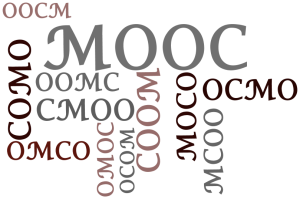There is a lot of talk about technology not fulfilling its promise in terms of improving student learning outcomes. I believe there are two factors at work here: one is that schools are not adjusting the way they assess to take into account what and how students are benefitting from the greater use of technology, i.e. the tests are the same as before, so simply do not measure the gains; the other bigger issue is that schools are not making meaningful use of technology.
I recently had a conversation with a 6th grader at a New York city private school that has a one-to-one laptop program. She has a new Macbook Air and is taking French. I asked her how the teacher makes use of the computer. She said they sometimes play online games used to practice their French.
My intention is not to focus blame on the teacher for not making more meaningful use of the technology. It is in fact very likely that he received little or no training in how to do so. As a result, he is simply replacing what he might have done before using a game in class with a game online (replacement being the initial step in technology integration by most teachers).
Another conversation with a student – this one a 9th grader at one of NYC’s best public high schools (one of the specialized schools that students have to test to get into) revealed that, for the most part, teachers do not make use of any technology beyond the classroom projector. Teaching and learning there look much as they did when I taught at one of the specialized high schools 10 years ago, despite the considerable changes in every aspect of educational technology since then. Students do not even have access to the school wireless network (wifi).
The point is that despite what is available to both teachers and students, despite all of the possible uses of technology to enhance both the teaching and learning experiences, teachers are to a great extent not using them. Why that might be I will save for another post.
How can and should teachers use technology to transform their teaching, and what does transformative technology use look like? Let’s start with what it looks like (or might look like – this is not one size fits all). The reality is that technology is ubiquitous. People today – male and female, young and old, students and workers – use technology constantly.
So what constitutes transformative technology? According to Professor Joan Hughes, referring to a 1985 article by R.D. Pea, technology that truly transforms the education process does so by: changing and/or expanding the mental work involved; increasing the number of variables involved in the mental process; and providing new opportunities for different types of learning unavailable using traditional approaches.
How this might happen can vary widely. There is no one model for transformative use; every school and every teacher will make their own decisions about what works in their school and classroom. For example:
Imagine a classroom where the teacher has provided students access to a wealth of materials – from universities and experts and other teachers – utilizing all sorts of delivery methods – video, audio, interactive websites, simulations, PDFs; where the teacher has chosen tools based on how they help students achieve the learning goals; where students are working at their own pace because the resources – well beyond what is available in any textbook – are all available and organized for them to do so; where they collaborate not only with their classmates, but with students in other classes taking the same course, in other parts of the country and the world and even consult with experts; where the stronger students help the weaker students; where students keep track of their own learning with learning journals that other students and the teacher comment on, and take their newly acquired knowledge and add it to the set of online course materials so that classmates and students in subsequent years can benefit from it; where the results of their hard work are authentic projects that yield tangible products that they can add to their own digital portfolio (When students graduate, they have a portfolio full of examples of their work that demonstrates not only their understanding of the content but also their mastery of the tools.); where the best work becomes exemplars that the teacher shares with subsequent classes, so the quality of work improves every year. In other words imagine a classroom where the teacher makes meaningful and appropriate use of technology and where students are in control of their own learning.
The keys to transformation include: bringing the outside world in; collaboration; 24/7 access to everything; self-direction; and self-differentiation. Transformation, then, means making full use of technology and not simply picking and choosing; letting students determine how technology is used rather than having teachers dictate; embracing exposure to the entire world; working with students to deal appropriately with various issues rather than trying to shield them; and using technology more like the way it is used in the world outside of school.
I would encourage you to read a marvelous report about one school’s rather successful stab at transformative technology use. Learning Untethered asked: “What happens when school children are given the tools they need to extend their learning beyond the four walls of the classroom and the limited hours of the school day?” Their answer (in part): “We were amazed at the degree of richness and complexity these young students demonstrated in their culminating projects compared to students completing the same projects in previous years.”
Notes:
Hughes, J., Thomas, R., & Scharber, C. (2006). Assessing technology integration: The RAT – replacement, amplification, and transformation – framework. Technology and Teacher Education Annual, 3, 1616-1620. www.slideshare.net/joanhughes/hughes-scharber-site2006
Pea, R. D. (1985). Beyond amplification: Using the computer to reorganize mental functioning. Educational Psychologist, 20(4), 167-182.
